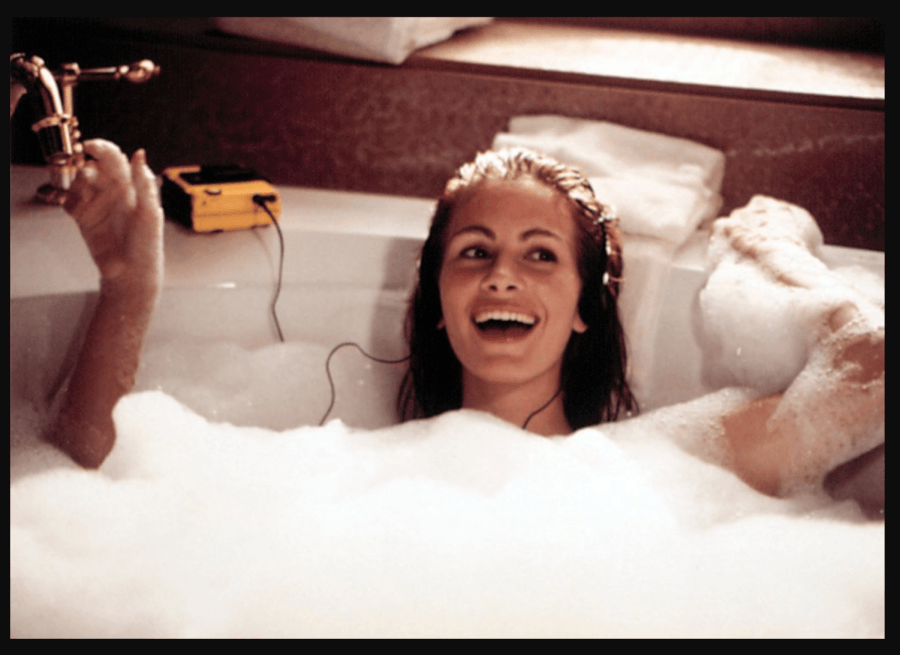Was it “The 40-Year-Old-Virgin,” “Knocked Up,” “Forgetting Sarah Marshall” or another romantically absurd, yet poignant, film to come out of the powerhouse Apatow Productions in the 2000s that told audiences the modern romantic comedy was going to be different? These films still had the sinisterly overused and charming tropes like the meet-cute, opposites attract and the revelation of true love — or love lost — in the final moments. How they differed from the genre’s Golden Age, roughly from 1989 with “When Harry Met Sally” and ending somewhere in the late-90s or early-2000s, was the internalization, appreciation and eventual satirization of the tropes. Coming to terms with your deepest insecurities or biggest resentments, in cahoots with the tropes like the typical rom-com relationship arch, opposites attract and replacing your ex, helped the Apatow characters find love in the end. Somewhere along the way, rom-coms became self-aware and turned their low-hanging-fruit romances into internalized battles with self-actualization and, even more apparent, self-love by placing these two as necessities before any romance.
This Valentine’s Day, Todd Strauss-Schulson’s rom-com “Isn’t It Romantic” hits theaters with Rebel Wilson as its star. It follows Wilson’s character Natalie, a staunch believer that the rom-com presents complete fiction and distorts society’s view on romance. After being knocked out, she finds herself trapped inside of what she despises the most: a rom-com! Hilarity — and romance — obviously follows. Strauss-Schulson isn’t one to shy away from meta-genres and trope-awareness; his 2015 horror comedy “The Final Girls’” title speaks to the horror genre’s trope of one woman making it out of the bloodbath alive when in this case, it’s a group of slasher movie fans.
Once the trailer for “Isn’t It Romantic?” dropped in the fall of last year, audiences drew comparisons to Amy Schumer’s 2018 rom-com “I Feel Pretty,” which finds Schumer as an insecure career woman who miraculously gains an extreme level of confidence after suffering a head injury. The two films get at the idea of self-referential romances, where Wilson gains some confidence in finding love sans a cheesy montage, and Schumer finds that she didn’t need to be the conventional beauty to find love, just a bit more of that highly-sought-out confidence.
But the plot of these films and others like it does not trivialize one singular romance. As far as titles go, it doesn’t seem that neither “Isn’t It Romantic?” nor “I Feel Pretty” center in on the development of a relationship. The title “When Harry Met Sally” gives you all you need to know about what’s going to happen. “Pretty Woman” leaves no room for imagination in how the leading male will view Julia Roberts’ character. The modern films are both a little tongue-in-cheek and self-aware with their titles. The phrase “isn’t it romantic?” is the noise-heard-around-the-world if that world were rom-coms. The leading woman gazes deeply off-camera and thinks back to whatever charming and sentimental gesture the leading men did. “I Feel Pretty” doesn’t even signal to the audience that the film would have any two-person romance in it at all. Modern rom-coms don’t concern themselves with the damsel-in-distress, the knight-in-shining-armor or even the hooker-with-a-heart-of-gold. They’re flipping typical tropes on their heads and fashioning new ones, where the lead character must practice a little bit of self-care before the universe gifts them that meet-cute.
“We’ve got a string of rom-coms today which are very much about improving themselves, and I think that really kind of fits with the general self-improvement vibe in our society and this pressure we have to improve ourselves and be the best person that we can be,” said Paul Booth, professor of media and cinema studies. “It’s kind of part of our everyday discourse. You see that in all sorts of different media popping up, this idea of being self-efficient.”
The self-efficiency Booth alludes to has saturated not only the entertainment industry but many other aspects of society. Social media advertisements sell us lollipops that will eliminate our protruding stomachs, and delivery services like Amazon exist to lessen the hassle of the easy things so we can focus on what matters more. The term “self-care” barely has a meaning anymore since we’re all so blindly chasing it. Rom-coms simply jumped on the self-care trend and didn’t look back. It shouldn’t come as a surprise because that is precisely how film genres evolve over time.
“In order for rom-coms, and any genre film, to modernize itself, it has to reflect the social and political frameworks it’s framed in,” said media and cinema studies student Cody Corrall. “Now we’re seeing rom-coms where the protagonists are people-of-color, queer, disabled and other identities that never fit in the traditional rom-com. It’s not to say that the traditional formal is inherently bad, but it has to adapt and be seen through a modern lens.”
While the films mentioned are all white, cisgendered and heterosexual relationships, the main characters don’t look like Julia Roberts or Meg Ryan. They reflect something the viewers had yet to see — someone complex enough to challenge the previous importance placed on finding their soulmate and replacing it with finding themselves. The cheeky, rose-tinted and skewed glasses are hopefully gone, and we will always have our favorite rom-coms to remember when lovers simply needed to accidentally pour orange juice on a stunning and harsh actress to fall in love a la “Notting Hill.” The genre’s progression is promising, as more LGBTQ+ and POC representation continue to get greenlight. Steadily, rom-coms, as predictable as they are cheesy, proclaim the deepest desires and most harrowing needs of the contemporary dating world — acceptance, inclusion and a dash of comedy to ease the anxiety.



